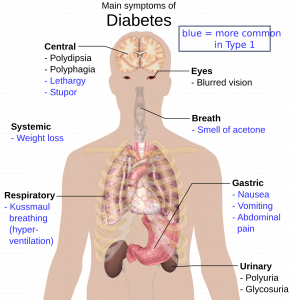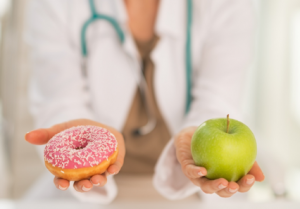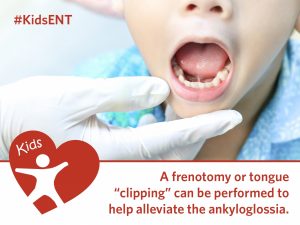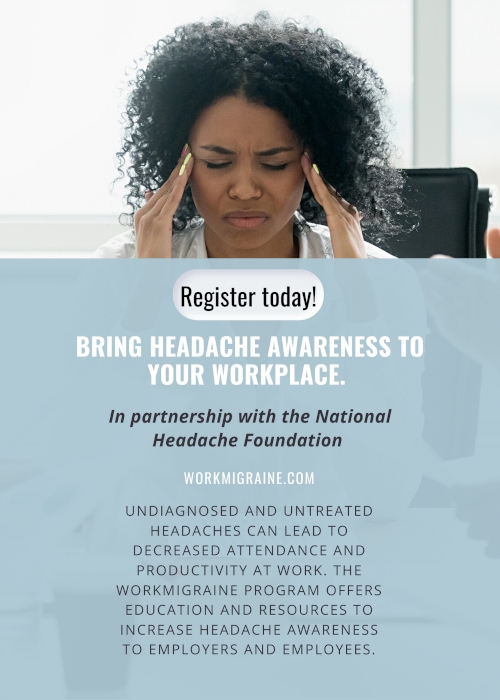Prevent Childhood Tooth Decay
Sunday, December 29th, 2019
Good dental health habits in children are an important foundation for a lifetime of dental health. Developing good oral hygiene habits in youth leads to continued habits in adults. This February we observe Children’s Dental Health Awareness, brought to you by the American Dental Association. Observed each February, this year’s theme is “Fluoride in Water Prevents Cavities! Get it from the tap!” Since 1945 America’s water fluoridation has grown to service 70% of all our drinking water supply. Fluoride still proves to be the most effective defense against dental caries.
Tips for Children’s Dental Health

In addition to drinking fluoridated water, here are some other general tips for good dental health in children:
- Brush teeth twice, daily, with a toothpaste containing fluoride.
- Clean between teeth daily, by flossing.
- Limit sugary beverages and snacks
- Visit your dentist regularly for cleanings (every 6 months from the time teeth appear)
Causes of Dental Caries in Children
Frequent Snacking

Children are notorious for frequent snacking. But repeated exposure of sugary or starchy foods can increase your child’s likelihood of tooth decay. Acid-producing bacteria feed on the sugar that’s left on teeth. The acid produced by the bacteria eats away at tooth enamel, causing cavities. Besides the obviously sugary foods, sugar can hide in nearly all kinds of foods. It would be impossible and even detrimental to good nutrition to try to eliminate all foods containing sugar.
Instead, strive to limit excessively sugary sweets or eat them with other nutrient-dense meals. The saliva produced during meals helps neutralize the acid from bacteria and rinses away any food particles.
Bottles & Sippy Cups

Very young children can develop tooth decay from sucking for prolonged periods on bottles or sippy cups. To prevent this it’s helpful for your child to finish all bottles before going to bed. It is also recommended that your child switches to a regular drinking cup by their first birthday. Sipping from a cup is a different motion than sucking from a spout or bottle and decreases the occurrence of tooth decay.
The choice of drink is also important for cavity prevention. Limit sugary sodas and juices, even milk with higher fat content. Healthy drink options, both for their bodies and teeth, are water or low-fat milk.
Cavity Prevention Habits

Teach your children to brush their teeth thoroughly and for an appropriate amount of time. Have them sing twinkle, twinkle little star in their head while they brush (or sing it for them). You can also invest in a fun toothbrush that blinks for the amount of time they should brush. Closely monitoring their tooth brushing ensures that they are getting their teeth clean.
Finally, schedule their dentist appointments every six months or as recommended by your dentist. Children should begin to visit the dentist from the time their first tooth appears, or at a year old – whichever comes first. Choose a dentist that specializes in pediatrics so that it’s an enjoyable experience for your child. A positive attitude about dentists and oral hygiene will lead to long term dental health.
Be sure to visit our National Wellness Calendar for more resources on Children’s Dental Health Awareness Month.
Common Reasons to Visit a Pediatric ENT
Saturday, December 28th, 2019
This February, we observe Kid’s ENT Health Month. Children experience a myriad of ear, nose and throat illnesses like ear infections, sinus infections, asthma, allergies, even hearing and speech delays. Many of these issues may be initially handled by your child’s pediatrician. But recurrent illness may need to be referred to your local Pediatric ENT.
Children’s Ear, Nose and Throat Issues
Tongue Tie
From the time of birth, children may need the expertise of an ENT. Last year, we focused on spreading awareness about ankyloglossia, or tongue tie. As infants, children may struggle to breastfeed or even bottle feed due to ankyloglossia, which hinders the movement of the tongue. Increased awareness over the last 20 years has led parents to ENTs to perform a simple corrective surgery called a frenotomy. This in-office procedure has a quick recovery time with a very low risk of complications.
Tympanostomy Tubes
Some children have repeated difficulty with ear infections. With frequent or lengthy bouts of ear infection, your pediatrician may refer you to an ENT for Tympanostomy tubes. Built-up fluid in the ears can lead to temporary hearing loss as well as discomfort. The procedure involves drilling a small hole in the eardrum, suctioning out whatever fluid may be trapped there, and inserting a small tube. These tubes allow air to reach the middle ear, providing relief from the built-up pressure.
Snoring and Sleep Apnea
Mouth breathing or snoring in children are other indications that a trip to the ENT may be necessary. Nasal obstructions can lead to blocked airways that hinder a child’s breathing. This can exhibit itself as noisy breathing, a runny nose and sleeping with the mouth open. There are various causes for these obstructions such as swelling from allergies or infections, a foreign object, or a deviated septum. Your pediatric ENT will be able to assess the cause and proceed with the proper treatment.

Children who snore experience what’s termed Sleep Disordered Breathing. Two to four percent of those children who snore also experience Obstructive Sleep Apnea. With Sleep apnea, the airways are completely obstructed for a brief period of time, causing the body to behave as though it’s choking. Blood oxygen levels drop, blood pressure rises and sleep is disrupted.
Snoring in children can usually be attributed to enlarged tonsils or adenoids. In children who are overweight, it may be due to fat deposits that gather around the throat and thus narrow the airway. All children who snore experience some level of disrupted sleep.
Improper breathing at night causes poor sleep quality, which can lead to other problems. Irritability, mood swings, hyperactivity, and slow growth can all be attributed to insufficient sleep due to poor sleep quality.
For all these ailments and so many others, we value our Pediatric Ear, Nose and Throat Doctors. Visit our National Wellness Observance Calendar to view other resources on Kids ENT Health to help educate you and your workplace. Our 2020 National Wellness Observance Calendar is Free to Download, so you can stay up to date on other important health observances throughout the year.
Cervical Cancer is Preventable
Tuesday, November 26th, 2019
January is Cervical Health Awareness month to raise awareness about HPV vaccination and prevent cervical cancer. Currently, 13,000 women in America have cervical cancer. Millions more have the HPV virus, which is the most common cause of cervical cancer. The critical thing to note this month is that deaths due to cervical cancer are preventable.

What is HPV?
Human Papillomavirus Infection, commonly referred to as HPV, is a prevalent virus. Nearly 80 million people in the United States are infected. This virus can be spread through sexual activity. Since many who are infected never exhibit any symptoms, it can be easily spread without realizing. This is why regular exams are so important.
Mild cases of HPV can produce genital warts, while extreme cases can lead to Cervical Cancer. There is no treatment available for HPV, which is why the vaccine is so important. Prevention is possible.

The HPV Vaccine
Doctors recommend that both boys and girls receive the HPV vaccine beginning at age 11 or 12. Receiving the vaccine at such an early age ensures a better and stronger immune response. Usually, only 2 doses are necessary for children under age 15. In adulthood, it may take up to 3 doses of the vaccine to achieve the same result. Individuals can receive the vaccine through age 45.
Beginning at age 21, women should receive a pap screening every year. Women over 30 should receive both a pap test and HPV test regularly. Most insurance plans cover cervical cancer screenings, so all preventative care should come at no additional cost to the patient. This makes it even easier to prevent Cervical Cancer.

Early Detection is Key
Regular cervical screenings can detect any abnormal changes in cells before they become cancerous. So even though there is no treatment, prevention is very simple. It’s simple because all it takes is to keep up with your regular well check-ups.
Help us spread the word and promote awareness about Cervical Cancer prevention. The tragedy of deaths by Cervical Cancer can be prevented with regular screenings and follow up care. Visit our Wellness Observance Calendar for resources and information to help us spread awareness.
Glaucoma: A Silent Stealer of Vision
Tuesday, November 26th, 2019
What is Glaucoma?
Today we’re going to discuss glaucoma. Glaucoma is a very serious family of eye diseases. There are many types of glaucoma, but they all have three basic characteristics.

- Intraocular pressure, which causes damage to the nerves in the eye: The eye continuously produces a fluid called the aqueous humor. It circulates within the eye and then drains through a structure called the trabecular meshwork. This fluid produces pressure which fills the eye and gives it its shape, much like air in a tire. Normal pressure is between 10 to 21, but some patients can tolerate higher pressures without apparent damage; this is called ocular hypertension, while others can have damaging effects with normal pressure. This is considered low tension glaucoma. This pressure is easily measured. Most patients have had the experience of the air puff tonometer. A more updated version is called a digital tonometer, which very lightly taps the surface of the cornea with a round, painless probe. This is one of many instruments we can use to measure the intraocular pressure. It is a good screening device, but if you are diagnosed with glaucoma, one of the more accurate instruments are used.
- Changes to the optic nerve in the back of the eye: The optic nerve carries all of the information from the photoreceptors to the brain. If it becomes damaged, the signals traveling through it will become less clear, kind of like having bad reception with an antenna. The optic nerve is visible when we look through the pupil with an instrument called an ophthalmascope. It is a round structure directly in the back of the eye. A healthy nerve looks pink in color and has a flat surface, or perhaps a slight depression called the optic cup. In glaucoma, we see a widening and deepening of the depression and the color changes from light pink to white. If the pressure is not reduced to an acceptable level, this process continues until the entire nerve is affected and can become severely and irreversibly damaged. As we said, the nerve is easily seen through the pupil. Sometimes, we will dilate the pupil and take photos of the nerve to document its appearance and have a reference to compare to in the future as needed. Otherwise, we will just take the photo of the retina if it is clearly visible in the photo and skip the dilation so that your eyes will not need to be blurry and light-sensitive for several hours. There are several other instruments available to measure and evaluate the extent of nerve damage and are used if glaucoma is present.
- Peripheral vision loss: When nerve damage has occurred between the eye and the brain, loss of the visual fields may result. Small areas are affected first, in your peripheral vision which the patient doesn’t notice, then larger areas resulting in tunnel vision, and if untreated, eventually total blindness in the eye. Loss of vision in the peripheral fields is the most significant finding in glaucoma and the most diagnostic in relationship to glaucoma. Extensive field loss can be debilitating to the patient, making it hard to perform day to day tasks. Visual fields are measured by instruments called visual field perimeters. They accurately plot a patient’s visual fields and we can see even small defects before they are noticed by the patient. Once plotted, we can use these as a baseline to compare to visual fields taken later. If no progression in field loss is seen we know the patient’s treatment is successful.

Glaucoma is an insidious disease, a silent stealer of vision. The patient has no symptoms, no pain, no visual complaints until the disease has progressed to an advanced state. Early detection is critical in preserving vision because once advanced it is very difficult to prevent further loss. Age, family history of the disease and race are all contributing factors. The mechanisms that cause glaucoma are not known and there is no real cure, only treatment to keep it under control. Treatment usually consists of drops to lower the pressure but some types of glaucoma may require surgical intervention. Yearly eye exams are the best way to catch the disease in an early stage before damage has occurred.
Guest Post Submission from See NC Eyecare. Visit them for all your vision needs in the Raleigh, NC Triangle Area.![]()
Visit IAB’s National Wellness Calendar for helpful links on Glaucoma Awareness
Ditch the Diet for a Healthier You
Monday, November 25th, 2019
Each New Year begins the same for so many people: a new hope that this will be the year to finally get in shape. A quick google search tells us that 70% of people make a resolution to eat healthier, while roughly 50% resolve to exercise more and lose weight. However, according to the New York Post, most people give up on these goals by January 12th. In fact, only 8 percent of people actually achieve their New Years goals while 80 percent fail.
Start Small, Keep it Simple
One of the reasons cited for the failure of these new habits is that people try to change too much, too fast. We’re a “microwave” society. We want results and we want them quickly. To truly achieve a healthy weight, it takes time and consistent effort.
Don’t try to change everything about your life from New Year’s Eve to New Year’s Day. You’ll burn out quickly and become easily discouraged at your inability to sustain these dramatic new habits. Change one small thing and then another. Focus on habits you can control rather than the results you hope for. Nothing you do can physically move the number on a scale. But you can commit to eating more fruits and less sugar. You can commit to eating green veggies at every meal and drinking less soda.
Start with something small that you know you can do. Make it so easy it almost seems silly. Then, once you’ve stayed consistent for a week or two, add something else. You’ll build self-confidence and a habit of consistency. As you stay committed to the small things, your capacity for the bigger things will come.

Don’t Diet
One of the biggest detriments to our long term success is touted as being the number one way to achieve a healthy weight. Dieting just doesn’t work. By dieting, we mean any form of diet or eating habits that you use to achieve weight loss, with no intention of continuing to eat that way forever. Any diet that deprives you or drastically restricts your calories is a diet that will not work long term. You may reach your goal weight, but as soon as you return to normal eating habits, the weight will also return.
Those who achieve a healthy weight and are able to maintain it, eat normally. Everything in moderation with your main source of nutrition coming from lean meats, fruits, veggies and even whole grains and dairy is the best way to fuel your body.
Your body is smart and it will tell you when you’re hungry and when you’re full. You should listen to it! Some of us have forgotten how, but we can pay attention and relearn our bodies cues. You will find yourself happiest and most fulfilled when no food is a “bad food” or “cheat food”. It’s all just food. Some options are healthier, yes, but you can eat some of everything.
Move Your Body
Exercise doesn’t have to be complicated. It doesn’t even have to be two hours at the gym every day! Find some activities you enjoy doing. Maybe you want to start taking a class at the gym or sign up for dance lessons. Even a simple 10-minute walk twice a day may be more movement than you were doing before. It will make a difference when done consistently over time.

Mindset is Everything
Make up your mind that there is no “goal weight” or size clothing or look that you must achieve. Decide to be healthy no matter what. Even if the scale never moves, even if you look the same, even if it seems like nothing is changing, you’re going to stick with it. As soon as your healthy eating habits and exercise become just that – habits – the change will come. Maybe it won’t be exactly the way you thought, but maybe it will be even better! Most of us give up without ever having been consistent enough to see the fruit of all our effort. We stop just shy of seeing the results. This time, decide you’ll keep going.
If you miss a few days or even a few weeks, don’t throw in the towel! Press the reset button and get right back to it. You’ll find your body rebounds faster the more it’s used to a healthy lifestyle. You’ll begin to see results sooner than you did before.
Disease prevention begins, first and foremost, with your diet and exercise. Achieve your healthy weight to look and feel great, of course. But ultimately, it’s so much more than that. When you take care of your body, you lengthen your life span and your quality of life. You are well worth it.
Visit our Wellness Observance Calendar for additional resources on Healthy Weight Week, observed January 19-25, 2020.
Symptoms & Risk Factors of Diabetes
Wednesday, November 6th, 2019

Diabetes is one of the leading causes of disability and death in the United States. One in 10 Americans have diabetes — that’s more than 30 million people. And another 84 million adults in the United States are at high risk of developing type 2 diabetes. To raise awareness about diabetes and healthy living, we are proudly participating in American Diabetes Month.
There are two types of Diabetes. Type 1 Diabetes is typically referred to as Juvenile Diabetes since it is usually diagnosed in Childhood. This type is characterized by an autoimmune disorder that attacks insulin in the body. Without insulin, our bodies are unable to covert sugar or glucose into energy. This can lead to various health issues as we’ll get to later in this post.
Type 2 Diabetes can be developed at any point in life from high levels of blood sugar. Over time, the body becomes resistant to insulin. The great news about type 2 Diabetes is that it is not only preventable but can even be reversed in the early stages.
So how do you know if you have diabetes? There are several warning signs and risk factors to keep in mind. Early detection is key for being able to reverse type 2 Diabetes. But with lifestyle changes in a healthy diet and physical activity, it is very possible.

Are You At Risk?
First, it’s important to know your risk factors. Are you someone who is at a higher risk than others at developing Diabetes? You can take a quick one-minute risk assessment test here.
Gender is one risk factor. If you’re a male you are much more likely to develop type 2 diabetes. This could be related to the fact that men tend to extra weight around their middles. Obesity is the largest risk factor and responsible for over 90% of those individuals diagnosed.
Obesity is an issue, mostly because of the lifestyle habits that lead to being overweight. A sedentary lifestyle and diets high in fat and sugar are a perfect combination for diabetes. This is great news since these things are in our control to change! Simply eating more vegetables, leaner meats and reducing soda intake can go a long way in changing our bodies.
Physical activity doesn’t have to look like high-intensity circuits to achieve health. Going for thirty-minute walks a few times a week is sufficient. Look for opportunities to sneak in extra activity by parking further from the supermarket, or taking the stairs at work. These small adjustments can lead to big results in your health and reversal of pre-diabetes (People with “pre-diabetes” have higher than normal blood sugar levels, but not diabetes yet).
Other risk factors include smoking, excess alcohol, family history, poor sleep habits, high blood pressure and high cholesterol. See your doctor regularly and ask them to check your blood sugar if you have concerns.
Warning Signs of Type 2 Diabetes
- Fatigue
- Frequent Urination
- Increased Thirst
- Insatiable Hunger
- Slow-healing wounds
- Blurry Vision
- Tingling in Hands and Feet
- Frequent Yeast Infections
For more about the reasons behind these symptoms, visit the Medical News Today article that explains more. If you or someone you know is exhibiting any of these signs, make an appointment with a doctor. Diabetes that is left unchecked can lead to all sorts of health complications including heart disease, kidney disease, stroke and more. Early detection is key. For more information and resources on Diabetes Month, visit our Wellness Calendar.
Halloween Safety Tips
Monday, October 28th, 2019
Thousands of children around the country are counting down the days to October 31st. It’s a holiday that rivals Christmas with the excitement it inspires. Although most of the spookiness is all in good fun, it’s important to be aware of some very real dangers on Halloween night. Here are our best safety tips to ensure the worst thing you experience this Hallowed eve is too much candy.
Costume Safety

Make sure all your costumes are made from non-flammable or fire-resistant material. Pumpkins with lit candles inside can easily become a fire hazard.
Purchase costumes that fit well and won’t drag on the ground potentially tripping someone. Wear comfortable shoes good for walking long distances.
Masks are lots of fun, but can make it difficult to see clearly. Reserve masks for the moment it’s time to say “trick or treat”. Removing them for walking from house to house is a safer option.
Wear reflective strips on costumes or carry flashlights or glow sticks. As the night gets darker, it becomes harder for motorists to see you.
Younger Children

Never allow young children to trick or treat alone. Always keep a responsible adult with them.
Check candy for any choking hazards or strange looking candy.
Monitor candy intake. Feed them a filling, nutritious meal before the evening so they won’t eat too much candy.
Keep to walking on the sidewalks, facing traffic. Hold little one’s hands when crossing the street.
Children are more than twice as likely to be hit and killed by a moving vehicle on Halloween. Be aware of darting into the street or unsupervised children.
Older Children

Work out an approved map for where they can trick or treat and come up with a specific time when they are to return home.
Caution children to only go to houses that are well lit. They should never enter a house or car to receive candy.
Children should always trick or treat in groups, never alone.
Teach them to cross at a crosswalk and never assume cars will stop and to be extra cautious when crossing the street.
Drivers
BE AWARE. Children and adults will be all over residential streets. If you’re driving through, SLOW DOWN. Be alert. Most will be visible by some kind of reflective aid, but many will not.
New and inexperienced drivers should avoid driving on Halloween.
Use your headlights even at dusk to increase visibility from a distance.

Let’s decrease the number of injuries and deaths this year by following these simple safety tips. Go out and have a good time, but let your awareness of the danger keep you alert and your babies safe. For a detailed bullet point list of safety precautions, visit the resource listed on our Wellness Observance Calendar. Download your free copy today!
5 Things You Never Knew About Your Liver
Tuesday, October 22nd, 2019
If I asked you what the most important organ in your body is, what would you answer? You’d probably say, your heart or maybe your brain. Some might even think of their lungs. All these organs are indeed essential to life. But there’s another incredibly important organ, essential to life, that often goes unnoticed: the liver. The liver is the largest solid organ in your body and is responsible for more than 500 functions. More than 500 because its functions are still being explored! We still don’t know the extent of its importance. Our bodies are incredible! Let’s explore 5 things you never knew about your liver and how we can keep it functioning in tip-top shape.
1. The Liver is Like a Starfish

Your liver is the only organ that can regenerate. Liver disease in extremely common and can lead to liver cancer. Liver cancer only occurs in people with a preexisting condition, such as obesity, hepatitis or alcohol abuse. In some cases, individuals have had the diseased portion of their liver removed. Many have gone on to live healthy lives with only part of their liver in tact. This is because it’s able to regenerate to its full size in a matter of mere months.
2. It Gives You Energy

Your liver breaks down carbohydrates and turns them into glucose: your body’s energy source. It stores glucose in the form of glycogen and is able to tap into it whenever you need a burst of energy! This why low blood sugar means low energy. Be sure to give your liver some complex carbs and whole grains to use as fuel so you don’t crash and burn.
3. It Keeps You From Getting Sick
Within the liver are a large number of cells necessary for your body’s immunity. These are called Kuppfer Cells or “KC”. Kuppfer cells are disease-fighting agents that fight off any bad gut bacteria that could make you sick. So when your body is fighting off an infection, thank your liver!
4. Helps You Lose Weight

This one is multi-faceted. Firstly, the liver produces bile. Bile is used to break down fat, cholesterol and vitamins so that they can be used by your body. Without your liver, carbohydrates, fats and proteins wouldn’t be able to be metabolized properly. Because of your liver, your body can use fat and carbs for energy rather than just storing them as extra weight. It’s also able to remove excess hormones from the body like estrogen and aldosterone. Too much of these hormones can lead to weight gain. Detoxing your liver may aid your weight loss efforts by enabling your liver to do its job more efficiently.
5. Poison Control
Perhaps the one thing you already knew about your liver is that it’s your body’s filtration system. It filters impurities and toxins from your blood and aids your digestive system. This is why consuming large amounts of alcohol and medications can be so damaging to your liver. Think of your air filter in your home or your car. What happens to it after a period of time? It starts looking really dirty and gross. It can’t function as well after all that filtering of poisons in your body.

Cleaning the Filter
So how do we reboot our liver and keep it functioning well? Even if you don’t use alcohol, the regular breakdown of proteins can create toxins in your bloodstream. Your liver is always filtering out the bad stuff. Taking a supplement with milk thistle and dandelion root is an excellent way to detox your hardworking liver. Turmeric, garlic, green veggies and even drinking tea have also been shown to have detoxing benefits. Basically eating a healthy diet and lifestyle is the best way to care for your liver.
October is Liver Cancer Awareness Month. Visit our Wellness Observance Calendar for more information on keeping your liver healthy.
5 Ways to Help End World Hunger
Thursday, October 17th, 2019
As I walked into the coffee shop to get my $2 coffee, I glanced out the window and saw him. Easily overlooked, he wasn’t even visible under his thin, tarp-like blanket covering him from head to toe. Next to his sleeping body was a crudely written sign that read simply, “Just hungry.”
The sincerity of his message was unmistakable and my heart slowly broke in two. I thought about the comfort of my vehicle I would head back to as I sipped my coffee, my sweet, loving family inside, the food in my pantry and my large, warm bed. Moments ago I had lamented to myself some lack I perceived in my own life. In this moment, seeing this man’s vast lack of common necessities, I felt like a Queen living with every luxury. I had everything I needed. His basic needs remained unmet.
Tears began to cloud my vision as these realizations flooded my mind. Love overwhelmed me and I thought, “No one should ever be hungry. There’s just no need for it.” Yet so many walked by him without a single thought. He was part of the regular landscape of their surroundings.
That day, we took a few extra minutes and bought him some food. He remained asleep when we left it by his side. Who knows if his sandwich was still warm when he awoke. Where would his next meal come from? Would he sleep there again that night? Only God knows. I wished we could do more.
This past week on October 16th, we observed World Food Day – a day dedicated to increasing awareness about hunger and nutrition. While hunger continues to plague underdeveloped countries, it’s a very real issue right here in the US as well. Many times hunger and obesity coexist due to foods high in starch, fat and sugar being more readily available and affordable than whole, fresh foods.
Most of us have plenty to eat, too much even. We throw good food away or let it go bad. It doesn’t matter. We’ll just buy more. What if we could do more? Take a little from what we weren’t going to use anyway, cook a few more meals at home instead of going out to eat and feed someone in need. We’ve researched some concrete ways to help the hunger issue across the globe.
1. The Power of 5

Nutrilite, an organic vitamin and supplement company created The Power of 5 Campaign in 2014 to fight childhood malnutrition. They developed a micronutrient supplement they call “Nutrilite Little Bits for children ages 6 months to 5 years old. They target children because malnutrition affects them most. If they don’t get the necessary nutrition in those critical first five years of life, their little brains and bodies won’t develop properly.
So far The Power of 5 has been able to help 31,455 children in 15 different countries. You can help them feed these children. Plan an event to help raise awareness and funds or you can donate funds yourself. Just $10 will support one child for an entire month. Pack a lunch to take to work one day out of the week and you can feed 4 children. Do it every day and you can feed 30.
2. Backpack Programs

Millions of children in the United States receive two hot meals at school each day. But those meals may be the only ones they get. Feeding America started Backpack programs over 15 years ago to help feed these undernourished children on the weekends. Over 450,000 bags of food are distributed to these hungry children and with our help, they can feed even more.
Contact your local food bank to find out if there is a backpack program in your area. If not, maybe you can help start one. If you’re in the Raleigh, NC Triangle area, look into Backpack Buddies for ways you can help the children in our community.
3. Donate to Food Banks
All of us have brought a can of green beans or ravioli to a food bank drive around the holidays. What is unfortunate is that much of the nonperishable foods donated tend to be void of much nutrition. Junk food and sweets, while tasty, don’t do much to sustain those suffering from hunger and malnutrition.
Here’s a list of good choices of food and other items to donate:
- Beans and grains
- canned vegetables and fruit
- canned protein
- peanut butter
- instant foods that only need boiling water (pastas, rice, oatmeal, instant mac and cheese)
- pickles, olives
- popcorn
- bottled water
- feminine products
- diapers
- toiletries
- your time. It means a lot to give of your time to volunteer and it’s usually much needed.
Did you know food banks actually accept donations at other times besides the holidays? Check-in with your local food bank throughout the year to find out what they might need most.
4. Action Against Hunger

For more global hunger issues, this organization is making a huge impact. They’ve fed 21 million people in 47 countries. They are very clear about where their donations are going and make it evident that 93% of their money goes straight to their programs.
This organization not only cares for malnourished children but also their families. They provide aid after natural disasters and help equip people to better care for themselves.
“We enable people to provide for themselves, see their children grow up strong, and for whole communities to prosper.” That’s a worthy cause to get behind. Click here to donate.
5. Host/Attend a Meal Packaging Event

Since it’s inception in 1998, the Rise Against Hunger organization has sent out over 500 million meals to hungry people around the world. These meals were packaged and prepared by volunteers like you and me. You can host a meal packing event as a family, a church or any organization. They utilize groups of all sizes.
You’ll assemble bags of rice, soy, and nutrients in assembly-line fashion. It’s a great way to get involved personally and get excited about the impact you can make by giving of your time and energy. It’s just a few hours of your time but makes a world of difference to each individual who receives that nutritious meal.

We hope you’ll find at least one area on this list that you can take action on today. Together we can end world hunger. If each of us does a little, it will add up to more than enough. Do your part, spread the word and we really can achieve zero hunger.







